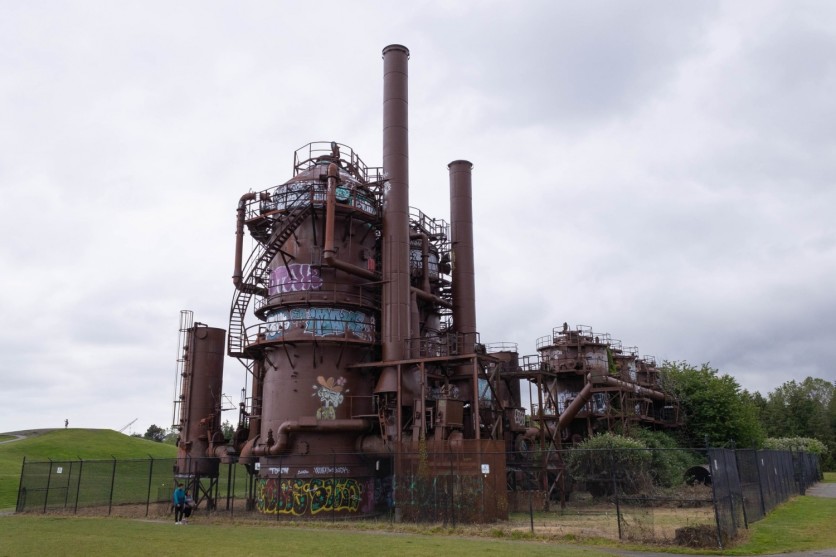
Carbon Monoxide CO cannot be seen, smelled, or tasted. In large quantities, it may kill within minutes. Incomplete combustion produces carbon monoxide, a gaseous byproduct that may leak from faulty or abused heating systems and pose a serious health concern. In the United States, carbon monoxide poisoning kills hundreds and injures thousands yearly due to malfunctioning stoves, heaters, and cars or generators used indoors.
Every year in the United States, an estimated 50,000 individuals are hospitalized because of Carbon monoxide (CO) poisoning. Before getting into the depth of the CO gas detector first, here's a brief detail about CO;
What exactly is this carbon monoxide gas?
Let's start from the beginning with how is Carbon Monoxide defined? Because it is colorless, odorless, and tasteless, carbon monoxide (CO) is renowned as the "silent killer" because of its toxicity to people. Safety devices such as Carbon Monoxide (CO) Gas Detectors may assist households in avoiding potentially life-threatening situations, such as carbon monoxide poisoning, by detecting a CO leak.
Carbon monoxide is a very simple molecule that consists of only one carbon atom and one oxygen atom. Carbon monoxide results from incomplete combustion of carbon-based fuels, such as wood, gas, coal, methane, oil, and gas, and heating oil (incomplete combustion).
Burning these energy sources in an open place with enough airflow renders them harmless. However, carbon monoxide is dangerous in enclosed rooms, such as basements, kitchens, garages, and campsites. One of the reasons carbon monoxide is so deadly is that it is difficult to detect without a sensor.
How do you detect carbon monoxide?
Carbon Monoxide (CO) Gas Detector s are the quickest method for preventing CO poisoning. In your house, you may set a (CO) Gas Detector (or numerous detectors). They function similarly to the smoke detectors alarm by emitting a siren when carbon monoxide is detected.
There are basic devices that activate a siren and sophisticated variants that link to the smartphone or security system. There are Carbon Monoxide Detectors available on the market.
How do Carbon Monoxide (CO) Gas Detector work?
Devices that detect carbon monoxide are easy-to-use and have just a few components. A microchip made of silicon and encased in plastic transfers an electrostatic voltage to a tiny detecting chamber containing a CO sensor. This sensor is used to detect and quantify atmospheric CO content. If indeed the sensor detects elevated CO concentrations, the microchip will activate an alert. The CO alarm may be powered by the electrical system of a building or by a battery.
Carbon Monoxide (CO) Gas Detectors may additionally have an LED power indication, a test button, and an LCD display. During an alert, LCD-equipped models may show the state of the system and CO level. Whether or not the device works depends on whether or not the battery has to be replaced, which is indicated by the power indicator light.
Carbon Monoxide (CO) Gas Detectors emit an alert when a specified level of carbon monoxide is detected over time. Different sorts of warnings are generated by various sensors:
- A biomimetic sensor, in which the absorption of carbon monoxide causes a change in the color of a gel, which in turn causes an alert to sound.
- Metal oxide semiconductor; the alarm is set off when the circuitry of the silica chip detects carbon monoxide. This causes the electrical resistance to drop, which in turn causes the alarm to sound.
- Electrochemical sensor; when electrodes in the chemical interact with carbon monoxide, the electrodes register changes in the electrical currents, and these changes set off the alarm.
After the alarm has been triggered by the Carbon Monoxide (CO) Gas Detector, the device must be placed in an area that is devoid of carbon monoxide in order for the siren to be turned off.
When will my Carbon Monoxide (CO) Gas Detector go off?
CO alarms go off when your sensor detects an increase in carbon monoxide levels in your house. With a CO concentration of 50 ppm or below, the warning may not sound for up to eight hours. Higher concentrations (over 150 ppm) may set off an alert within minutes.
Act swiftly whenever an alarm sounds since exposure to modest doses of carbon monoxide over lengthy periods of time may be just as harmful as exposure to ultra-high doses of carbon monoxide suddenly.
Conclusion:
It is essential to install CO detectors on each level of your home so that all family members may hear the alarms and be informed to the situation. For further protection when you and your family are sleeping, you should also install carbon monoxide detectors in each bedroom, outside sleeping areas, and in common spaces.
In addition, you may add a CO2 Gas Detector to the house in order to monitor the concentration of carbon dioxide in the houses like underground car park, indoor air testing, etc.
ⓒ 2025 TECHTIMES.com All rights reserved. Do not reproduce without permission.




